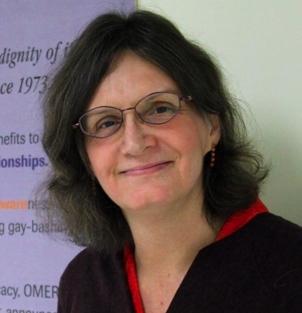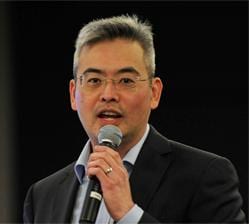
Trans activist Susan Gapka. Credit: http://kscheuer.files.wordpress.com

Andre Goh, Toronto Police Service diversity management unit manager. Credit: oldsite.acas.org
Bianca Charles says she broke down in tears recently when a streetcar driver shouted at her and called her a man.
Charles, a trans woman, says she was on the King streetcar when the driver tried to get her attention in the most insulting way she could have imagined.
“He kept saying, ‘Hey you! Man! Man!’” she says. “I kept walking because I look like a girl and I was dressed like a girl, with long hair, nails and lashes, so he must not be talking to me.”
Another man standing nearby turned to the driver: “You mean me?”
“The driver said, ‘No, I’m talking about the man dressed in women’s clothing,’ referring to me,” Charles says. “He just kept yelling at me, ‘Excuse me sir?’
“He was trying to embarrass me. I just started crying. It was so hurtful. I felt sick.”
Trans Lobby Group chair Susan Gapka says the driver’s alleged behaviour is in violation of the City of Toronto’s Human Rights and Anti-Harassment policy.
TTC spokesperson Brad Ross says he can’t comment on specifics because the TTC human rights department is investigating the incident.
Gapka thinks the problem may have something to do with the lack of queer-specific training for TTC drivers.
Ross says drivers are given general “sensitivity training.” That includes impressing upon them the importance of being “courteous and respectful” to all people, but the information is not specific to lesbian, gay, bisexual and trans people, Ross says. “They are trained in the Ontario Human Rights Code: what is acceptable and not acceptable, common courtesy.
“We don’t have anything to tell [staff] here’s how to deal with transgender people . . . There is no component in the training curriculum dealing specifically with transgender people. I do not believe so.”
There is no citywide standard in Toronto for diversity training for frontline staff.
“Many trans people live in poverty and rely on transit to travel the city, so it’s very important that they are safe places for people,” Gapka says. “Staff has a responsibility to uphold human rights principles. The city has gender identity as a protected ground . . . Trans people have the right to ride transit and feel safe.”
At the Toronto Police Service (TPS), diversity training with a focus on lesbian and gay people has been evolving since the mid-1980s, says diversity management unit manager Andre Goh.
Things began to change after the 1981 Toronto bathhouse raids, in which more than 150 Toronto police descended on the city’s gay bathhouses and arrested about 300 innocent men. Legal settlements demanded police step up their knowledge of gay issues, beginning with sensitivity training for officers.
Police training has moved from “a tokenistic approach” to a program with diverse perspectives woven throughout, Goh says. Now, gay and lesbian officers build the curriculum. In recent years police have focused on two main areas – trans issues and building relationships with allies.
Many new police recruits still struggle with transgender issues, he says. “That’s why we now spend a lot of time on trans [issues]. That means we spend time talking about language, pronouns, protocols, hypothetical situations.”
More recently, discrimination and abuse by police during the G20 as reported by queer activists highlighted gaps in the training.
When there are reports of homophobia or transphobia from officers, Goh says, complaints are taken very seriously. “When people feel threatened, officers must put themselves in the shoes of the general public.”
At Toronto Public Health, access and equity manager Ruby Lam says frontline staff receive two full days of anti-oppression training.
“We talk about all the ‘isms,’ including homophobia and heterosexism.”
The training extends beyond the Toronto Public Health offices. “The training is offered to any health worker looking to better serve the LGBT community.” That could be a school nurse making a presentation to a school’s gay-straight alliance, a nurse from the sexual health clinic with a question on trans issues, or a staff member in a vaccination clinic who wants to be sure they are asking the right questions.
An October workshop and presentation focused on trans health. Lam says it was a chance for staff to get comfortable with seeing a trans person’s body, in the hope of preventing future disrespectful moments with patients.
“One thing I saw as hugely important was when he actually showed the staff images of nude trans bodies . . . If you have a moment where your jaw drops, have that moment then instead of in front of a trans person,” she says. “See the images now and get over the shock before meeting clients or patients. Because that’s not respectful to them.”
Lam says public-health staff are taught that people can self-identify in any way they want. “We hope to capture their gender identity, to be respectful of it, and not do anything that questions or shames them.
“Our ongoing goal is to strengthen our practice, so it’s respectful and inclusive of all different people,” she says.

 Why you can trust Xtra
Why you can trust Xtra


